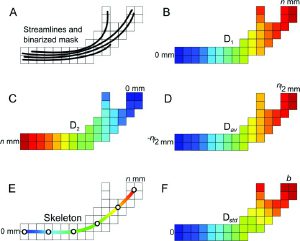Abstract
Objective: Diffusion tensor imaging (DTI) tractography has shown tract-specific pathology in temporal lobe epilepsy (TLE). This technique normally yields a single value per diffusion parameter per tract, potentially reducing the sensitivity for the detection of focal changes. Our goal was to spatially characterize diffusion abnormalities of fasciculi carrying temporal lobe connections.
Methods: We studied 30 patients with drug-resistant TLE and 21 healthy control subjects. Twenty-four patients underwent DTI toward the end of video-EEG telemetry, with an average of 50 ± 54 hours between the last seizure and DTI examination. After manual dissection of the uncinate and inferior longitudinal and arcuate bundle, they were spatially matched based on their distance to the temporal lobe, providing between-subject correspondence of tract segments. We evaluated point-wise differences in diffusion parameters along each tract at group and subject levels.
Results: Our approach localized increased mean diffusivity restricted to or more prominent within the ipsilateral temporal lobe. These abnormalities tapered off as tracts exited the temporal lobe. We observed that the shorter the interval between the last seizure and DTI, the higher the mean diffusivity (MD) of the ipsilateral tracts. Linear discriminant analysis of tract segments correctly lateralized 87% of patients.
Conclusion: The centrifugal pattern of white matter diffusion abnormalities probably reflects astrogliosis and microstructure derangement related to seizure activity in the vicinity of the focus. The negative correlation between the interval from last seizure and MD suggests a role for postictal vasogenic edema. The ability to assess tracts segmentally may contribute to a better understanding of the extent of white matter pathology in epilepsy and assist in the presurgical evaluation of patients with TLE, particularly those with unremarkable conventional imaging results.

